EBR charges a service fee to manufacturers to produce ebike reviews and videos, this began in 2018. It’s the same flat fee for each bike, and it helps us to keep the site going while limiting ad clutter. We appreciate the opportunity to serve you with our opinions and data but respect your right to know that we receive compensation :)
The BESV TRB1 AM is an eye catching electric bike… plastic covers along the downtube and top tube create a motorcycle look that matches the 2.8″ plus sized tires and wider thru-axles. The AM stands for “all mountain” and describes the sort of terrain that this bike is capable of handling. With longer travel 140 mm air suspension from RockShox and a Kind Shock seat post dropper, you can transition from moderate trail sections to steep climbs and then descend rugged terrain. The geometry isn’t as upright as an enduro or downhill bike, and that improves aerodynamic efficiency and makes handling nimbler. The TRB1 AM actually comes in two flavors… an older Class 1 20 mph version which came in yellow, black, and blue and the newer Class 3 28 mph version which only comes in black and blue. It’s unique to find a higher quality full suspension mountain bike that is capable of going faster like this because the legislation in many states restricts use on trails to 20 mph. My experience ascending moderate paved hills was that the top speed dropped from ~28 mph down to 25 mph pretty quickly, and I wouldn’t expect more than 20 mph (or less) ascending dirt paths. So really, the higher top speed is best used for flats, descents, and paved sections getting to the trail head. The bike is a blast to ride, but it is heavier than average at ~60.3 lbs. The additional weight comes from a reinforced frame with unique steeper downtube that surrounds the high capacity Lithium-ion battery pack. This battery is easily removed for independent charging and makes the bike lighter for transport and maintenance. There’s a lot to appreciate here, but I wasn’t a huge fan of the narrower pedals, keyed on/off switch, and wider plastic top tube. I brushed my knees against this portion of the frame occasionally while pedaling fast, but it wasn’t a deal killer. Perhaps with wider pedals, I’d feel more relaxed with my footing and the top tube issue would solve itself? In short, BESV has created another unique product with the TRB1 that is a blast to ride and offers a combination of features you simply can’t get elsewhere… especially in such a beautiful package. Internally routed cables, excellent weight distribution, and larger 203 mm disc brakes top it all off.
Powering the bike is a Brose Drive T (for the older version) or TF for the newer speed pedelec version. If you’re looking at one of these bikes and aren’t able to test ride it to gauge the speed difference, you can still tell the difference between the two by looking at the chainring and cassette. The Class 3 model has a larger 44 tooth chainring (vs. 38 tooth) and a wider 11 to 46 cassette to help you reach and maintain the higher top speeds. A Shimano Deore XT derailleur with Shadow Plus positioning and one-way clutch offers excellent shifting, but the Brose motors do not provide shift detection. Instead, these motors measure rear wheel speed, pedal cadence, and pedal torque in milliseconds. If you simply reduce your pedaling force, the motor will ease back as well, and this is the optimal time to shift to avoid mashing. The challenge here is that with a heavier ebike running on larger knobby tires that don’t roll as efficiently, the bike can slow down pretty fast when climbing if you ease off to shift and the motor will kick back in. I did experience a bit of mashing during the ride test, but the components here are pretty nice and should withstand a bit of trauma and still hold up over time. The chainring uses a narrow wide tooth pattern that locks the chain in to reduce slipping and drops. The derailleur has a one-way clutch that can be activated to tighten as spring inside for bumpy terrain or faster rides. Simply press the grey lever into the up position to activate the clutch. It will make shifting a bit tougher, but reduces chain slap. I put it into the forward position to perform rear wheel maintenance or ride on smooth streets to make shifting easier. The trigger shifters on this bike are very nice and offer two-way activation for the high gears and a four-shift step down for lower gears. Both motors are advertised as being able to put out up to 90 Newton meters of torque, but the nominal output is probably closer to 80 Nm. This is still above average for the current generation of mid-motors and necessary for the heavier weight and larger wheels. I personally enjoy how quiet and smooth Brose motors are, they accelerate based on how hard you pedal, similar to the Bosch Performance Line CX in eMTB mode. Inside the motor, a Gates carbon belt connects the reduction gearing to provide a smooth feel and two freewheels ensure you won’t experience drag when the motor is inactive or you’ve passed the maximum support level. One complaint however, is that the motor has been positioned parallel to the ground vs. tipped up to align with the downtube. This lowers ground clearance a bit, but doesn’t impact the effective chain stay length because of how the Brose drive unit is engineered.
Powering both versions of this bike is an extra-large Lithium-ion battery pack that slides between the two top tube sections and seats along the downtube. It’s a very unique design and I tried to show it from below in the video review above. The appearance of the frame is that the top tube is one solid piece, but it’s actually open near the head tube and this is where the plastic gas-tank styling begins. To get the battery off of the frame, you insert the key and turn all the way to the left (while pushing down). This opens a little plastic door and allows you to grab a handle on top of the battery. You can slide it up and lift it all the way out for independent transport and storage, but it does weigh ~8.8 lbs which is about 3 lbs more than average. The capacity is 36.3 volts and 21 amp hours for a total of 762.3 watt hours. For comparison, most current generation packs offer ~500 watt hours. Take not however, that the higher capacity doesn’t necessarily equate to increased range if you’re constantly riding above 20 mph. The air resistance at higher speeds significantly cuts into efficiency, I’m told that the effect is exponential as the speed increases. You can charge the battery on or off the bike frame, and I do like the BESV charger that’s included with the bike because it puts out 4 amps vs. just 2 amps on many cheaper bikes. This means the pack will fill faster and you can get more ride time in. However, the charger is a bit large and heavier than average at ~2.2 lbs. To really care for this or any Lithium-ion battery it’s best to store it in a cool dry location, avoid extreme temperatures, and aim to keep it above 20% full to avoid stressing the cells. The BESV display panel has a 10-bar battery readout that allows you to approximate range a bit better than many competitors that only show 5 bars… but I didn’t find a dynamic range estimator in the display settings, so that’s a bit of a trade-off.
Activating the bike is fairly easy to do and doesn’t require a lot of reaching… just the key. You have to insert the key and turn it to the right in order to activate the Brose Original LCD display panel. The key has to remain in while riding, and even though the head folds and doesn’t take up much space, this does present a noise and snag hazard if you’ve got a keychain attached. Fine, ride without a keychain right? But then you’re left with a single loose key in your pocket when parking. It’s not as much of an issue for electric mountain bikes like this, where much of your riding could be on trails and the bike may not leave your direct sight, but it would be an issue for commuters. I could definitely see myself using this bike to cruise around town during the week, especially with the faster 28 mph top speed! So then, you get to a bike rack and pull out the key and remove the display panel, but there’s just more of a chance for losing that key. Gripes aside, I do love how the display is positioned, how simple it is to use, how quickly it comes to life, and that there’s a full sized USB port built into the mount just below the screen! This could be great for charging Garmin devices, maybe powering a headlight, or using your smartphone for GPS. I feel that the stem and handlebar on this bike look a bit skinny and out of place next to the fat top tube and downtube, but at least they can be swapped out with standard parts compared to proprietary thick designs seen on other bikes like the Stromer ST5 (which cannot be swapped). Navigating the display panel is pretty easy because there’s an independent button pad with up, down, and circle icon mounted within reach of the left grip. The circle changes display readouts and the arrows allow you to raise or lower assist, for which there are three levels. If you completely turn assist off, the bike performs as a heavy pedal-power bicycle and there’s a little triangle that appears on the display that signals walk mode. Unfortunately, at least for the Class 3 model, it seems that walk mode is not enabled. This is too bad, because it could be handy for climbing steep sections of trail that you aren’t comfortable pedaling up or walking a bike home if it gets a flat tire. Feel free to chime in with a comment below if you got walk mode working or can confirm that it is still active on the older Class 1 TRB1 AM.
Ever since I saw the BESV TRB1 at Interbike in late 2017, I was excited by the design and features. At that time, I didn’t know that the company was working on a high speed version, and I think it’s a bold but awesome move. The bike is heavy, it’s a bit expensive, but it comes with one of my favorite motors, an excellent display, phenomenal battery pack (BESV’s parent company Darfon makes batteries, solar panels, and other electronics). The all-black suspension is functional and great looking, the thru-axles provide strength for the larger tires and heavier frame, and the wide range of gears let you engage with the bike naturally. It’s a perfect balance of natural pedaling and natural drive system power delivery that makes you feel like a professional athlete. With the plus sized tires, the heavier bike won’t sink into soft terrain or deflect off of rocks as easily and they provide even more vibration dampening comfort, along with the suspension. As a city commuter platform, this thing is like a dual-sport motorcycle… but it doesn’t have rack or water bottle bosses, so you’ll be wearing a backpack. For trail and mountain use, it’s not going to be as nimble as some competing bikes because of the added weight and wider frame. For those who love the style and have larger bodies, this bike may be a perfect fit because of the reinforced alloy frame and high-capacity battery. It was really special getting to see both TRB1 models back to back (and that allowed me to legally ride on the trail in California) so I want to thank Sam at the Electric Bicycle Center in Fullerton, California for letting me test ride his floor model. Big thanks to BESV for partnering with me on this review and bringing the latest Class 3 model to the trail. I welcome comments and feedback below or in the BESV forums, especially if you own the older version and have feedback. There was some talk about custom colored plastic shields and I saw a camo version at Interbike (you can see it in this video around 11:33), but those have not materialized as of yet.
Pros:
- The design is very unique and cool, it looks futuristic and comes in two color choices (or three if you include the older TRB1 AM with the low-speed operation)
- Massive 762.3 watt hour battery is nearly double the size of what I would consider an average pack for the 2017/2018 season, this means you can go further and ride at higher speeds longer
- Powerful Magura MT4 hydraulic disc brakes in the front and rear, exactly what you need on a speed pedelec mountain bike with a heavier battery/frame
- The bike is completely purpose-built with internally routed cables, a custom motor interface, and great weight distribution… it’s all low and center on the frame which improves handling
- I was a little surprised and very impressed to discover that this product comes in two frame sizes, I feel that it offers a lot of value for $5k and is one of the few full suspension Class 3 speed pedelecs available on the market right now
- Minor plus here, I appreciate the Kind Shock LEV Integra dropper post because it makes mounting easier and allows for on-the-go body position adjustment (there are no set steps, you can dial in the position precisely)
- The Brose T and TF motors use an internal Gates carbon belt drive that feels very smooth and runs quiet compared to most other current-generation mid-drives that only have nylon gears
- The motor can support up to 120 pedal strokes per minute without fading as much as some competitors and it uses a double freewheel to reduce any sort of drag when pedaling unpowered or above the top supported speed, I also apprecaite that it uses a standard sized chainring
- Narrow-wide tooth chainring will grip the chain better to reduce slip and drops, this reduces the need for a front derailleur or guide and is idea for trail and mountain use along with the one-way clutch (grey lever on the derailleur) that keeps the chain tight when riding on bumpy terrain or at higher speeds, you can put it in the down position for easier shifting and rear wheel maintenance
- The older 20 mph version of this ebike used an 11-42 tooth cassette but they upgraded to 11-46 tooth to balance out the larger chainring in the front which helps you achieve higher speeds (this way, the 46 tooth sprocket in the rear still lets you climb effectively with the heavier build)
- Longer Boost hub spacing provides a stronger spoke bracing angle and the thru-axles for both wheels provides stiffness and strength, I like the larger plus sized tires too… because they provide cushion, grip, and spread the heavier weight out across softer terrain without sinking in (also reduce deflection in rocky environments)
- Highly adjustable suspension allows you to adjust air pressure, compression, and rebound, and the stanchions are anodized black for protection and style
- I’m really glad that the battery pack is completely removable because that makes lifting and servicing the frame and wheels a lot easier (or just bringing it inside), the battery can be charged on or off the frame and the charger is a bit faster than average (great considering the higher than average capacity of the pack)
- The display panel is removable, which makes it easier to protect, and there’s a full sized USB port on the base of the mount, so you can run GPS, a headlight, or charge your phone from that extra-larger battery as you ride without having a bunch of cables getting in the way
- I love that the Brose Original Classic display shows 10 bars for the battery level, but haven’t figured out how to show range… I created a full guide for how to use this display and change settings back in the forums here
Cons:
- The fuel-tank plastic cover design is unique, but I bumped my knees on it while pedaling on several occasions, I appreciate that it is tapered in towards the seat post but would prefer even narrower overall
- I dislike having to insert and twist the key to power on the bike, the key itself is fairly small and has a folding end (to stay out of the way), but I often carry keys on a keychain and that would scratch the bike and jingle around when riding… the alternative is to have a single loose key floating around in your pocket when not riding the bike
- This electric bike is definitely on the heavier end of the spectrum considering the super nice RockShox air suspension and lightweight Brose motor, I think it comes back to the extra plastic and frame design features as well as the higher capacity battery (which weighs ~3 lbs more than a traditional 500 watt hour pack)
- The Brose motor can be positioned horizontally (as done with the TRB1 AM), vertically, or at an angle, and I prefer the 45-degree angle because it raises the ground clearance and can blend into the downtube more naturally… BESV went with horizontal because their battery is larger, and this also changed the design of the downtube and head tube interface, it might not be as strong or lightweight as a more standard triangle that comes straight down from the head tube
- I couldn’t get walk mode to work, it seems like maybe that feature is disabled on the newer model? I cannot say for sure about the older 20 mph version
- The Brose motors don’t offer shift detection, like Bosch and some Bafang motors, but they do measure rear wheel speed, pedal cadence, and pedal torque in millisecond time so you can reduce mashing and drivetrain wear by simply backing off when you change gears
- I love that this ebike can support higher top speeds to help you get to the trail quicker, but it might not be fully legal on all trails (usually just Class 1, not Class 3) and to be honest, you can’t really pedal up moderate inclines at full speed, so that feature is mostly for flats, descending, and pavement
- Minor complaint, considering how fat the top tube and downtube look, the stem and handlebar look a bit thin and unbalanced visually, the black TRB1 AM that I was reviewing had an aftermarket stem added with a steeper 45-degree angle because apparently the handlebar was striking the frame when oversteering occurred… this is something you might want to look into replacing as well, or just be aware and careful
- The pedals are alright, they do offer a solid alloy platform with grippy fixed pins, but they felt a bit narrow to me and I’d probably want to upgrade with some full sized Magnesium Wellgos to really feel confident pedaling off-road
Resources:
- Official Site: http://us.besv.com/
- More Pictures: https://photos.app.goo.gl/Vm0v7jtqZUOkioAg2

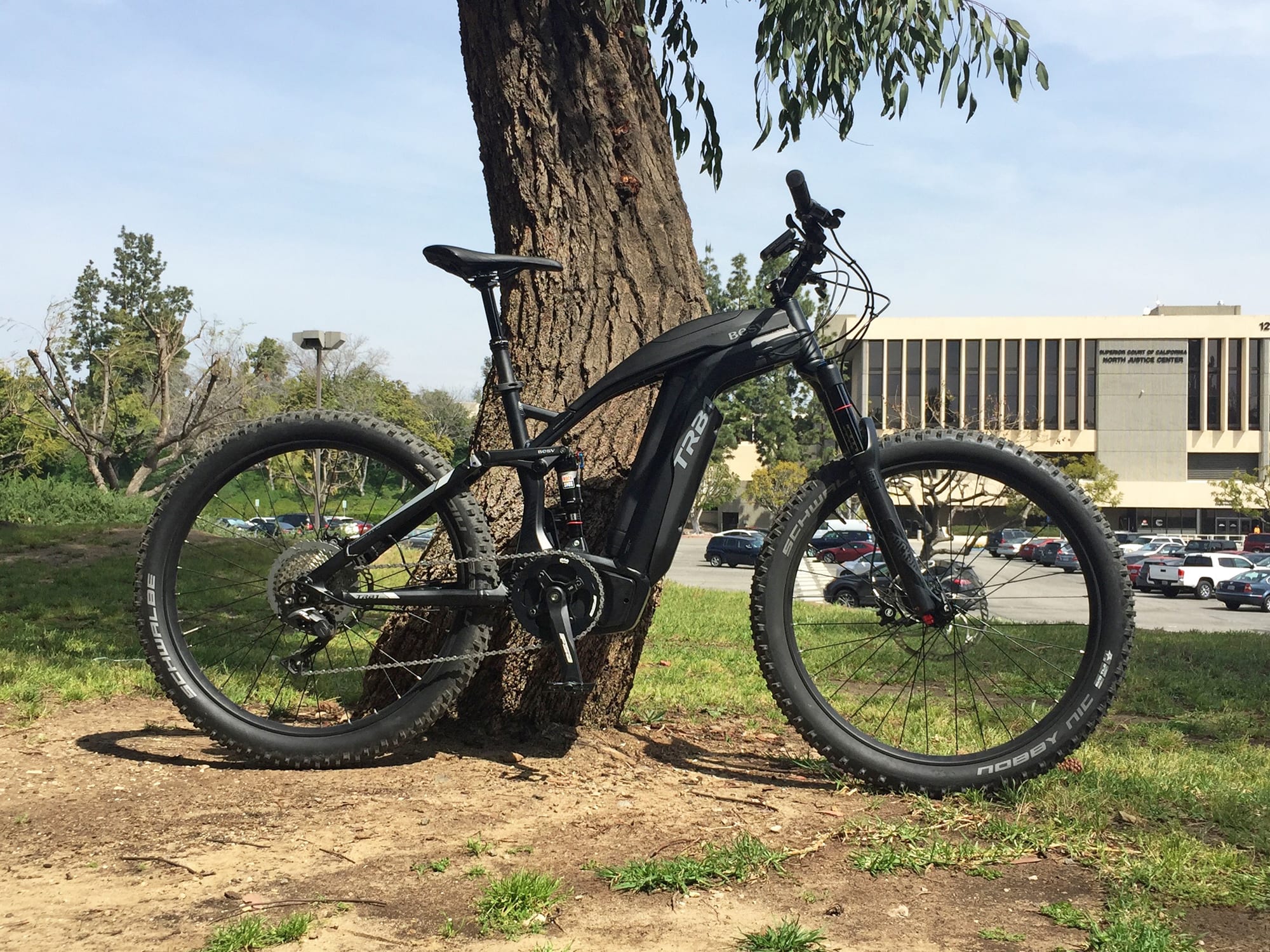
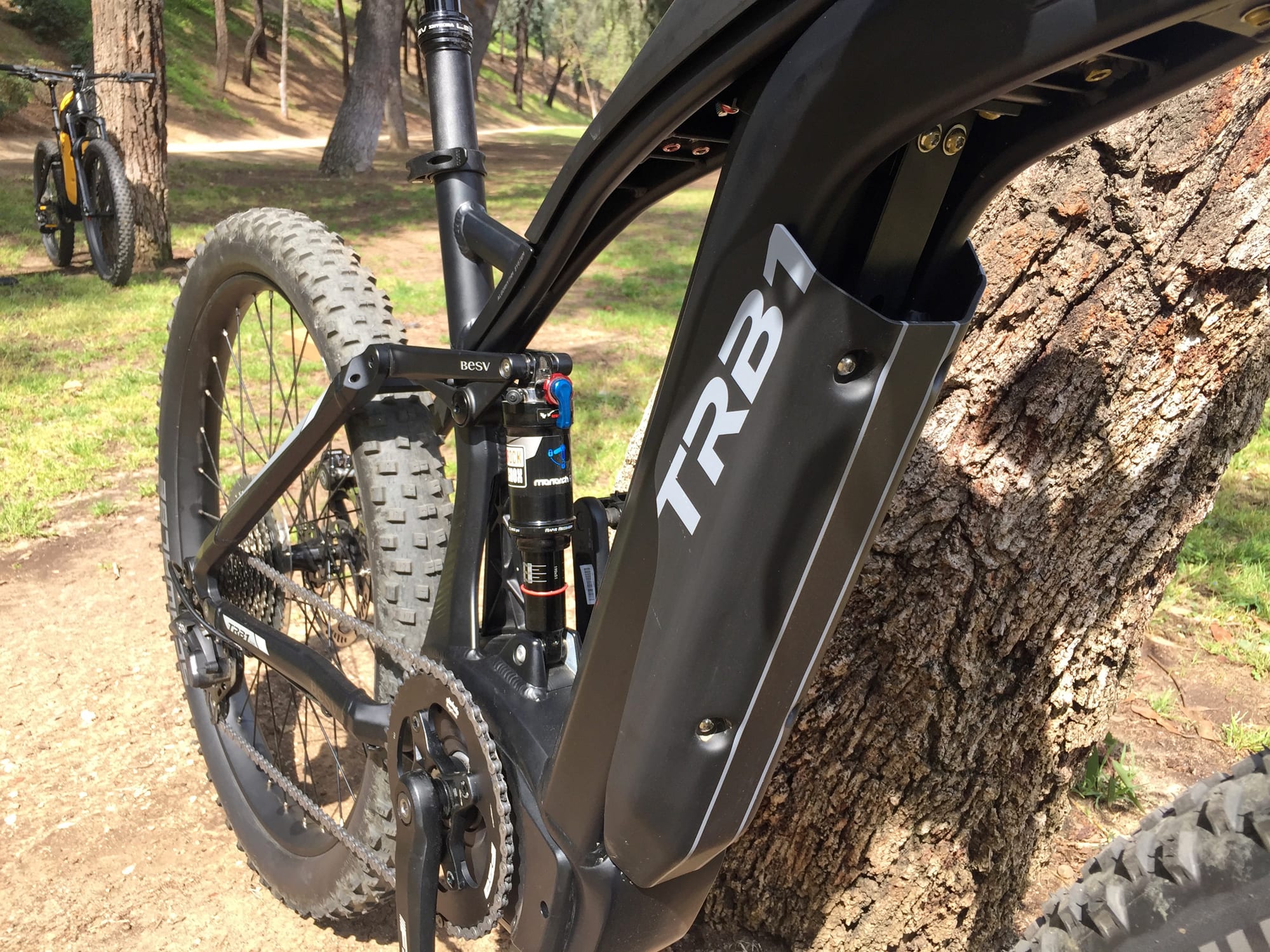
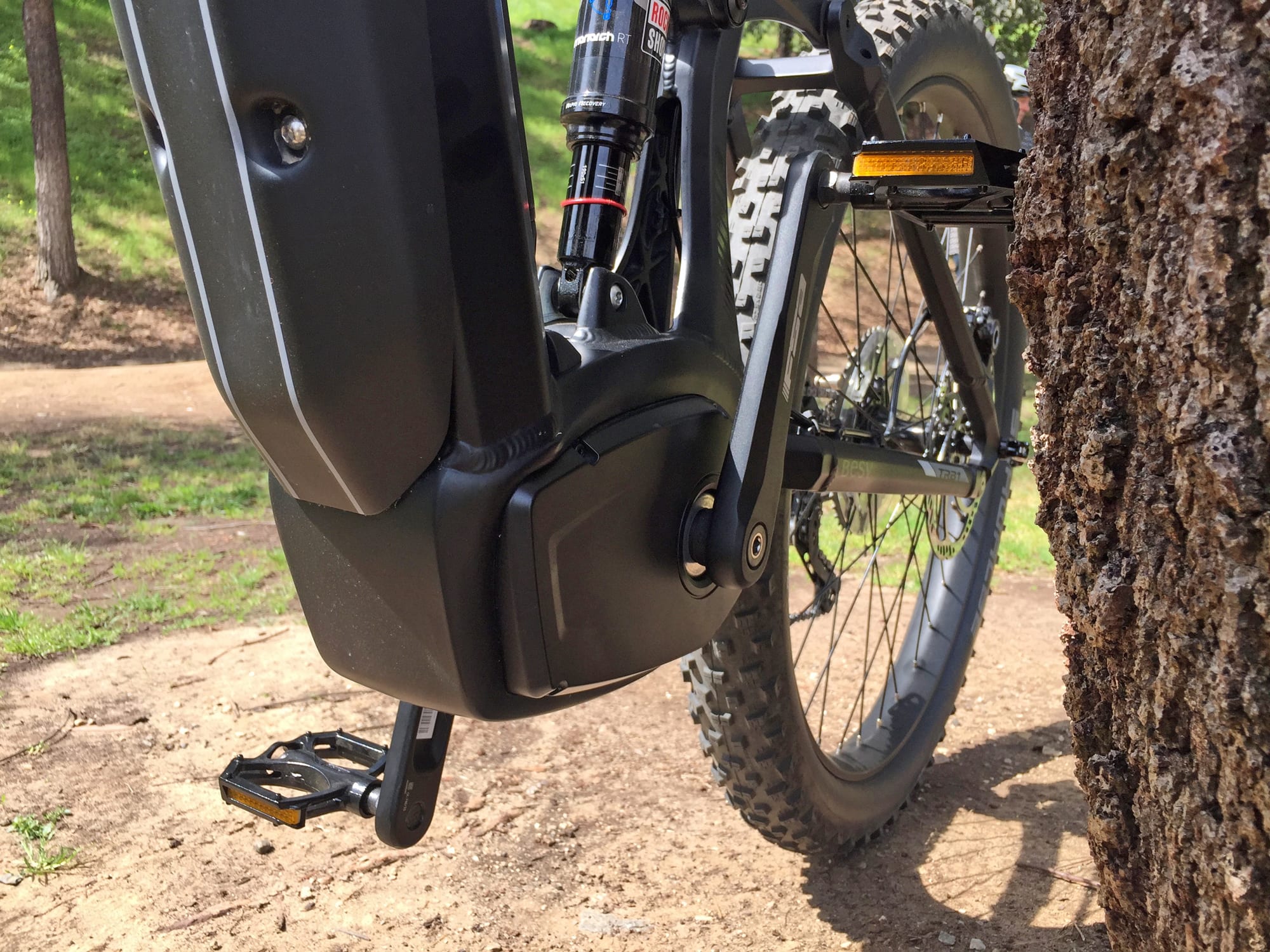
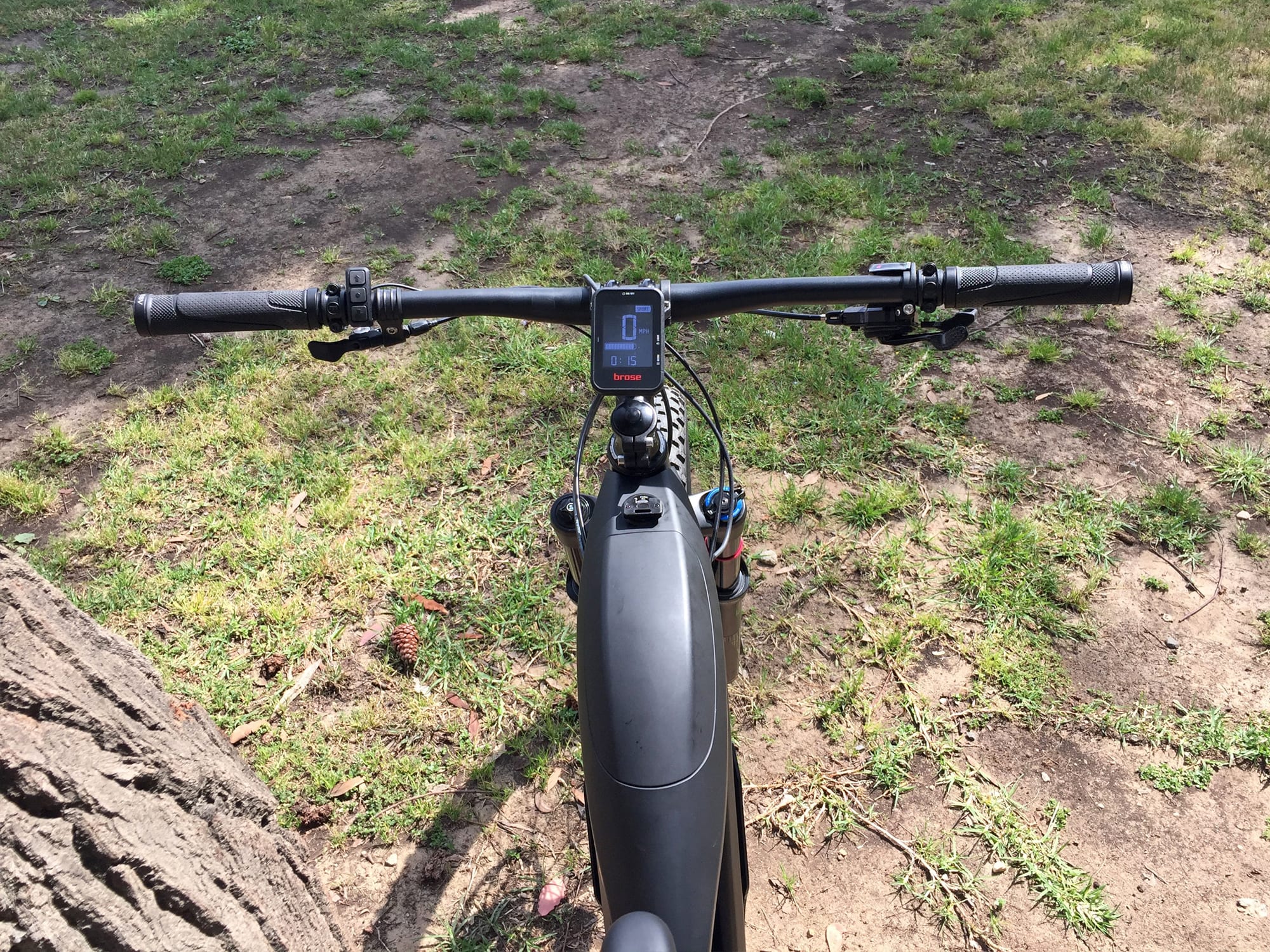
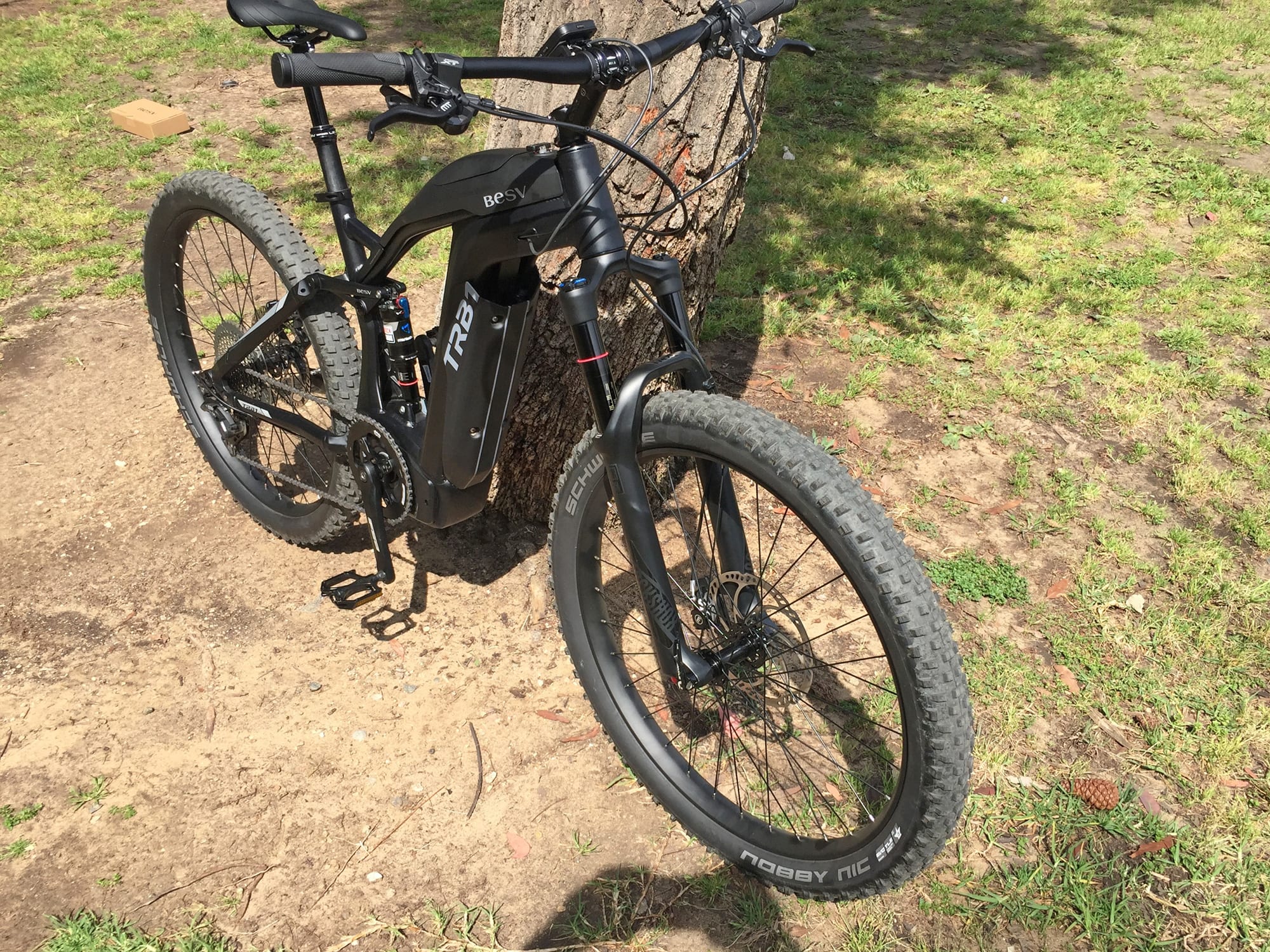
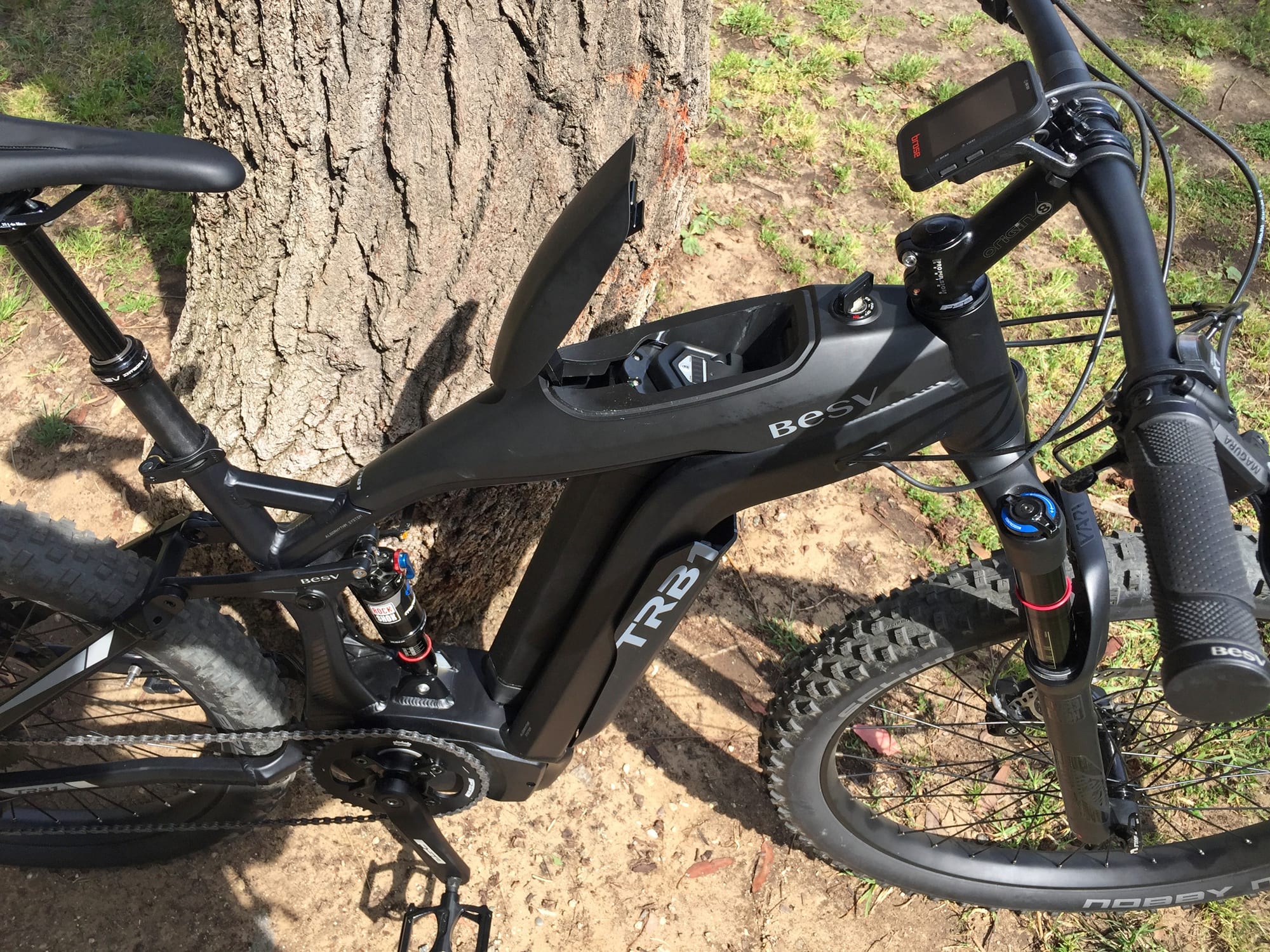

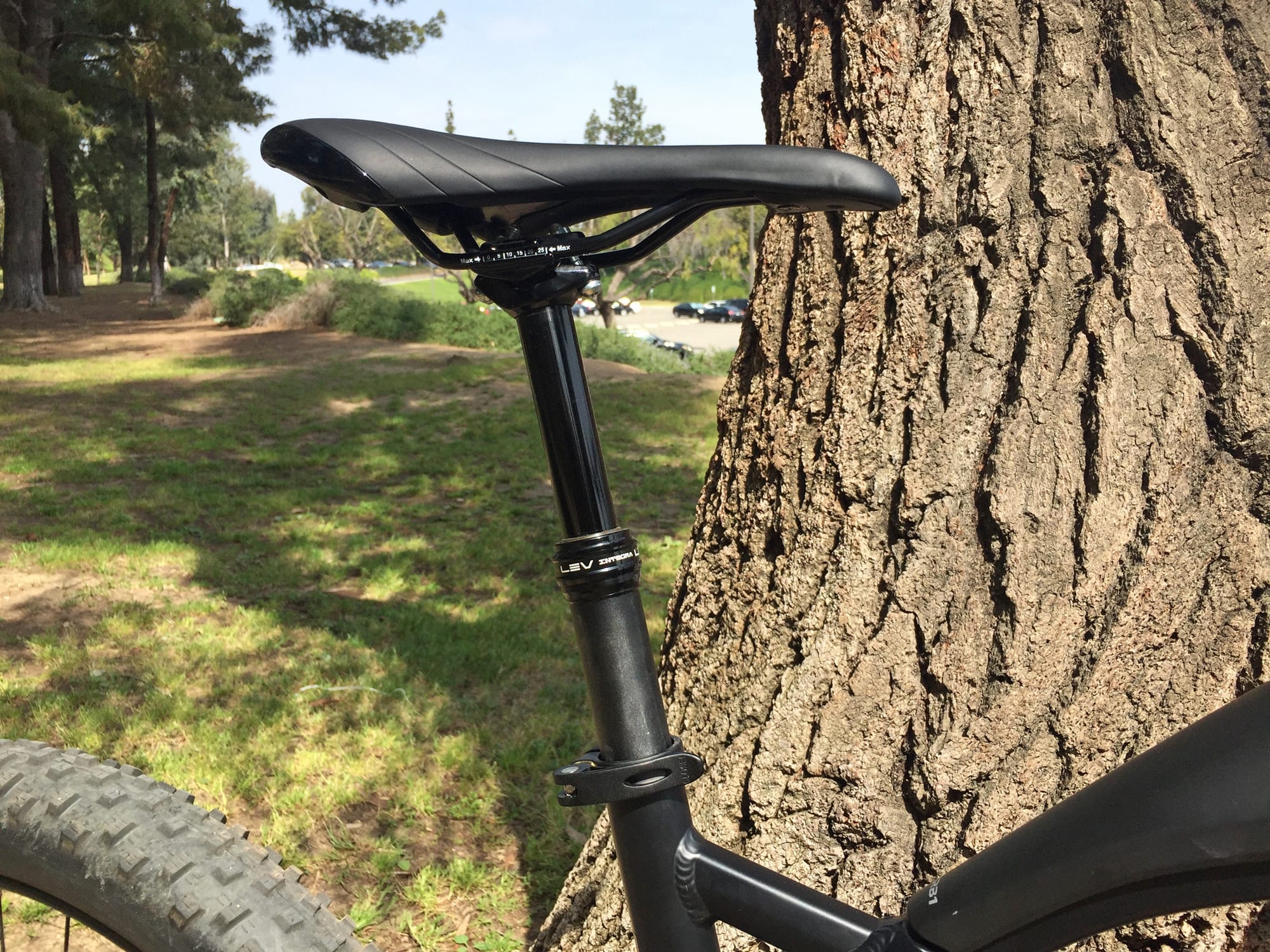
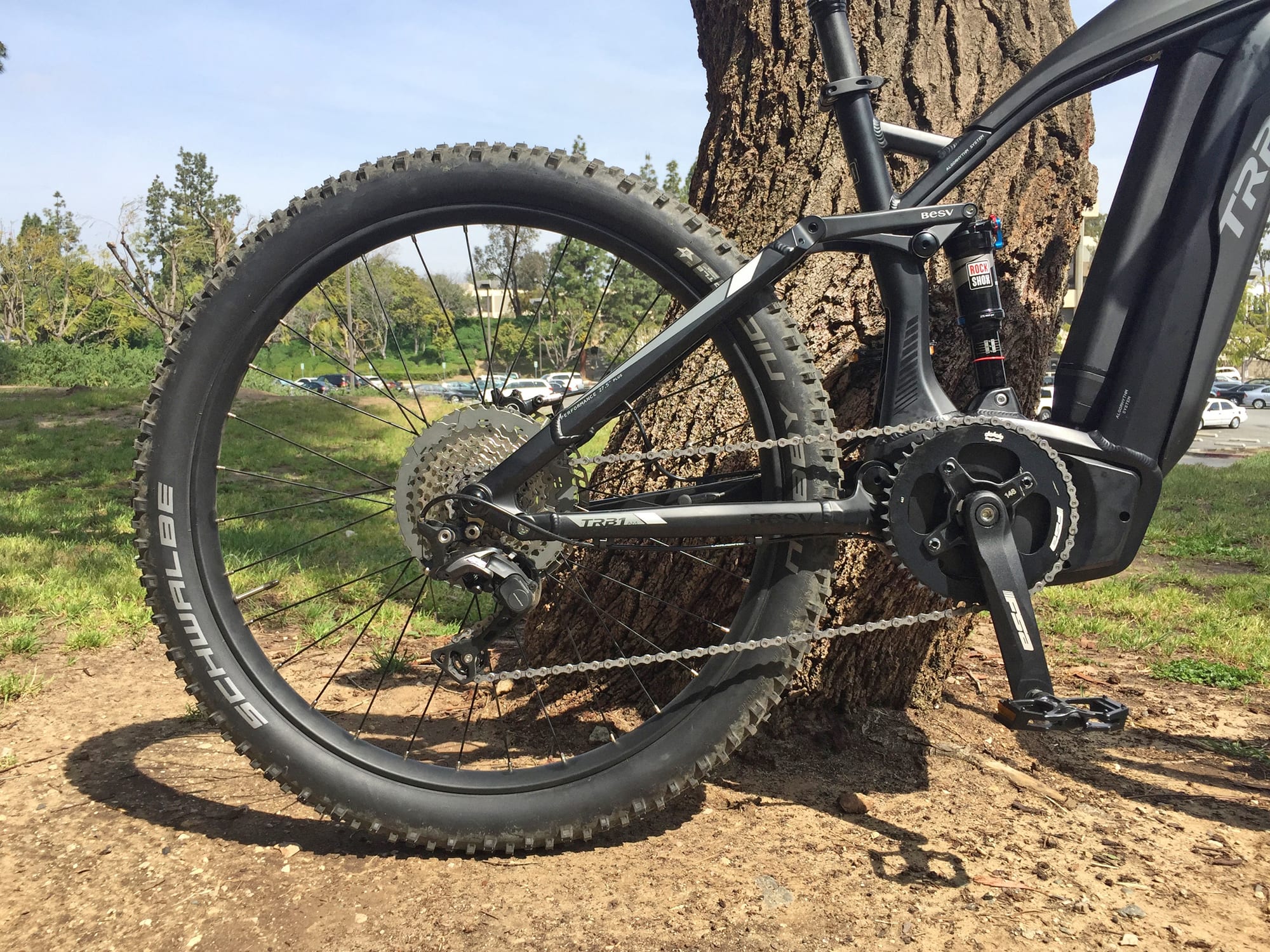
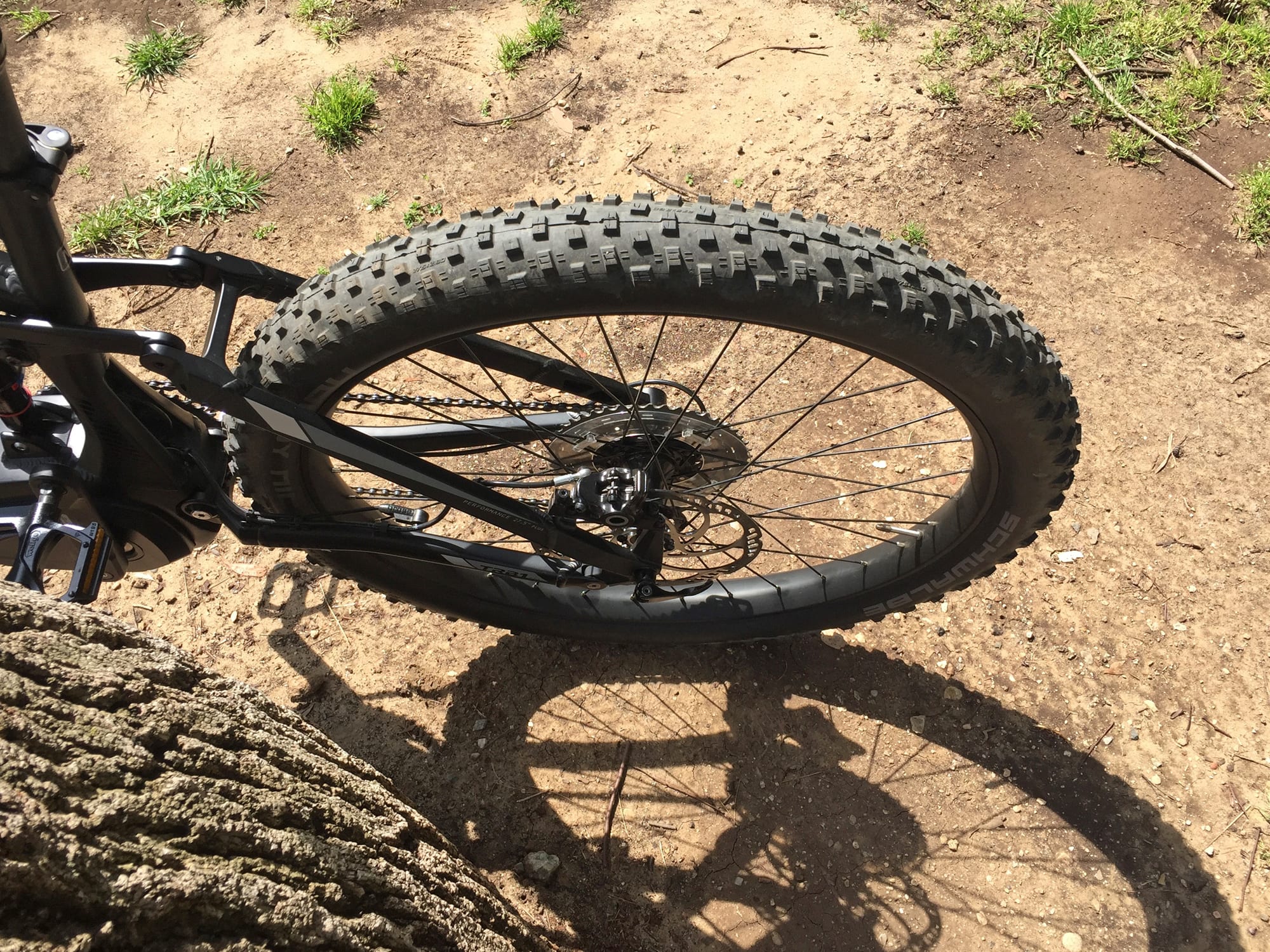
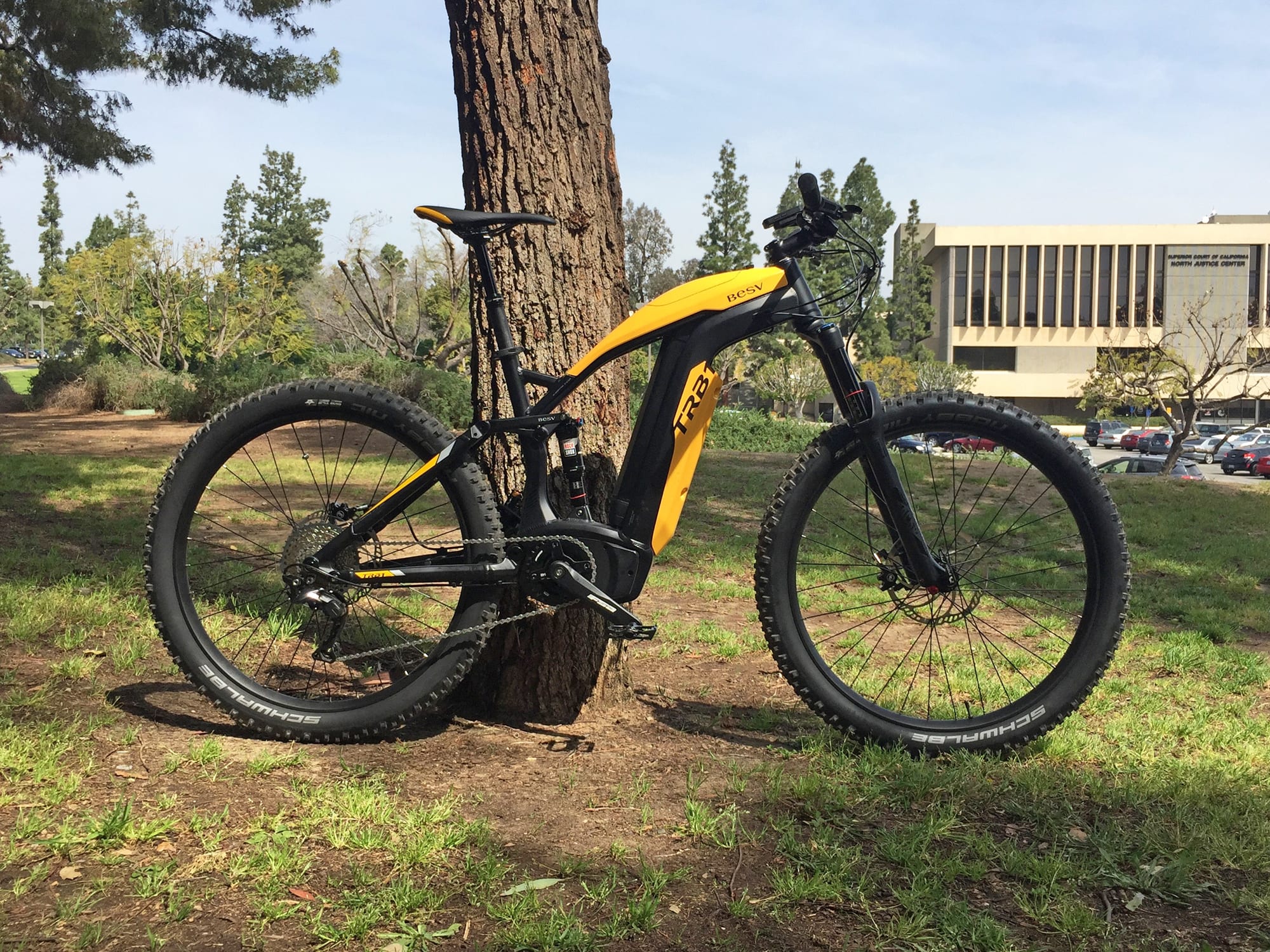
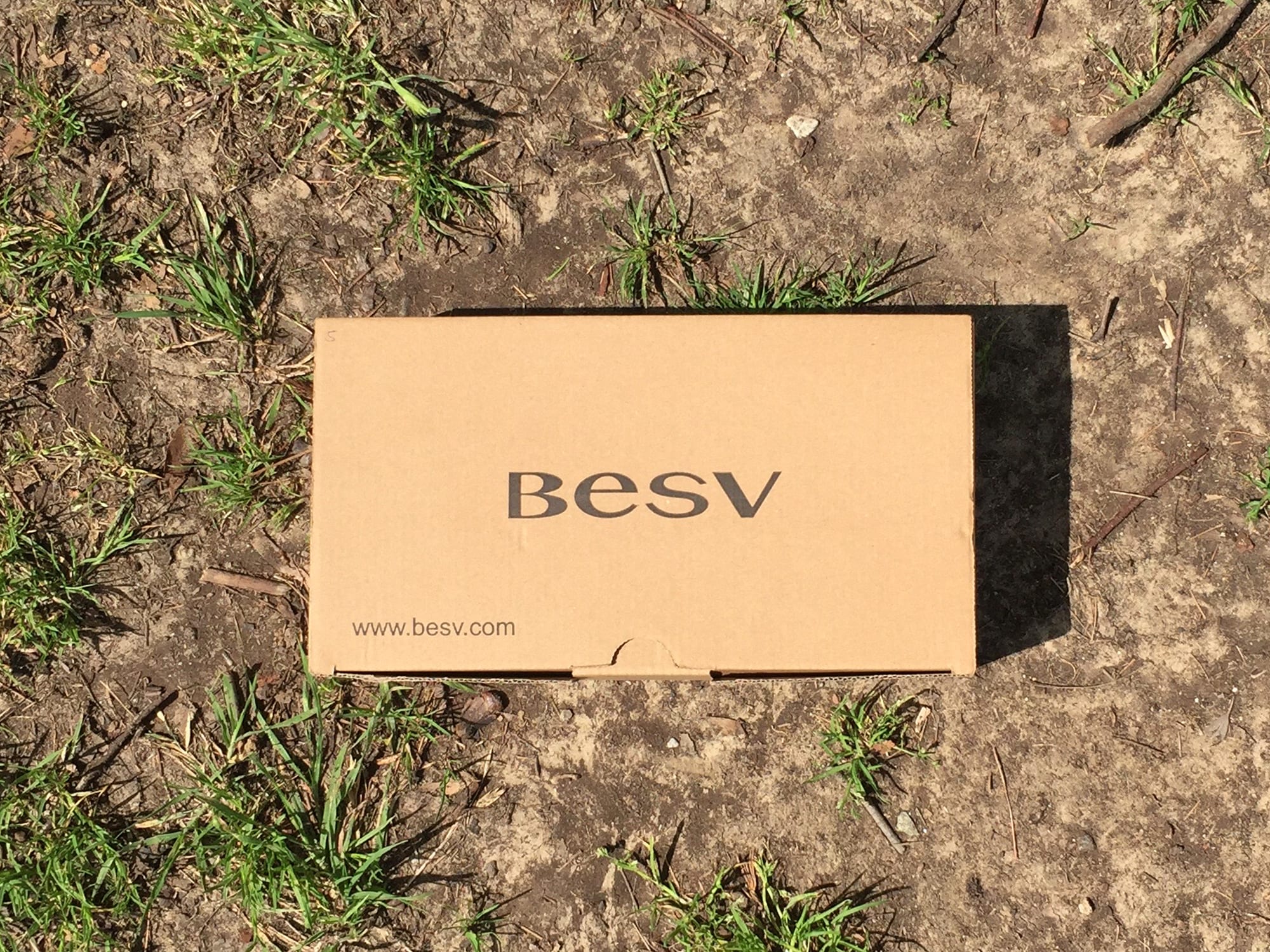
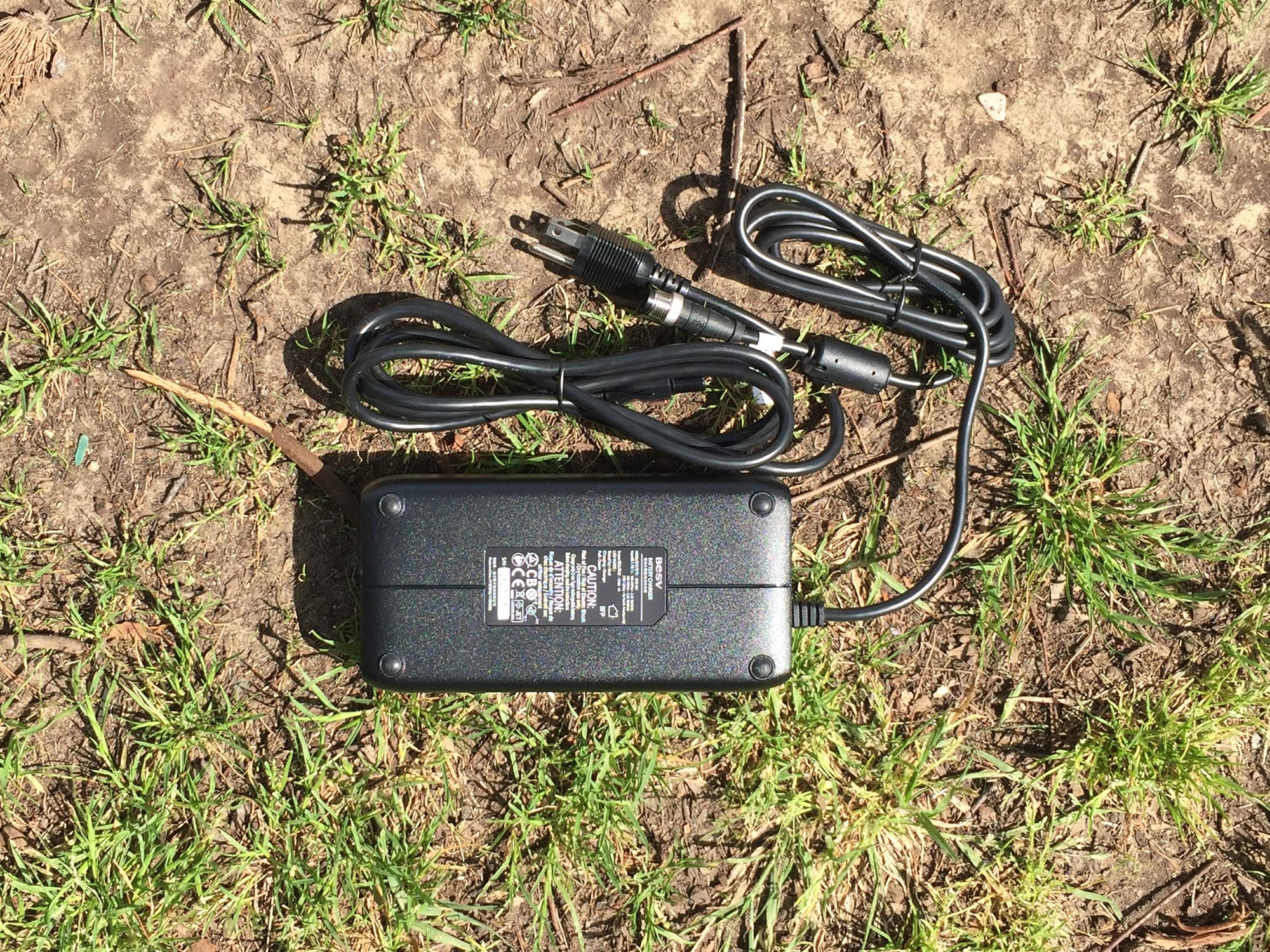

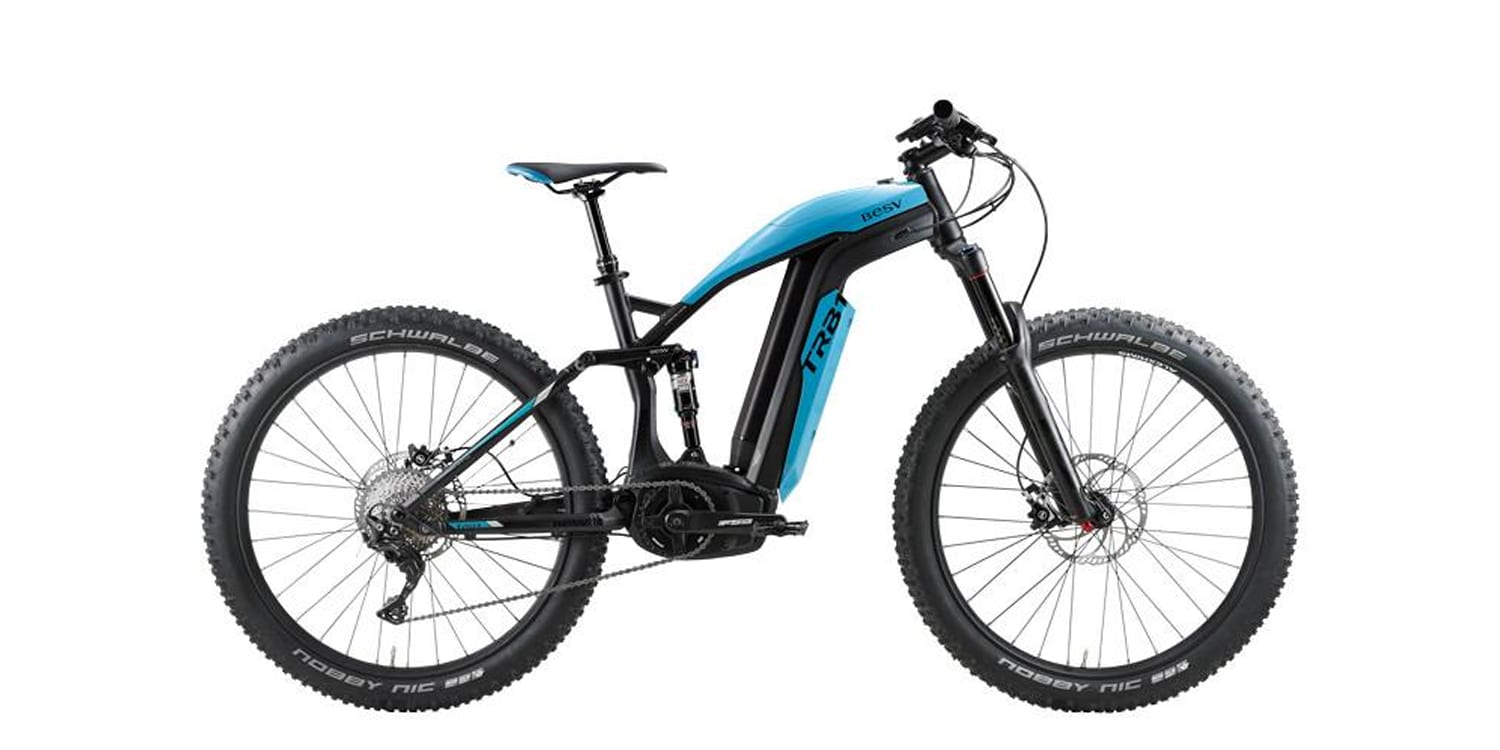
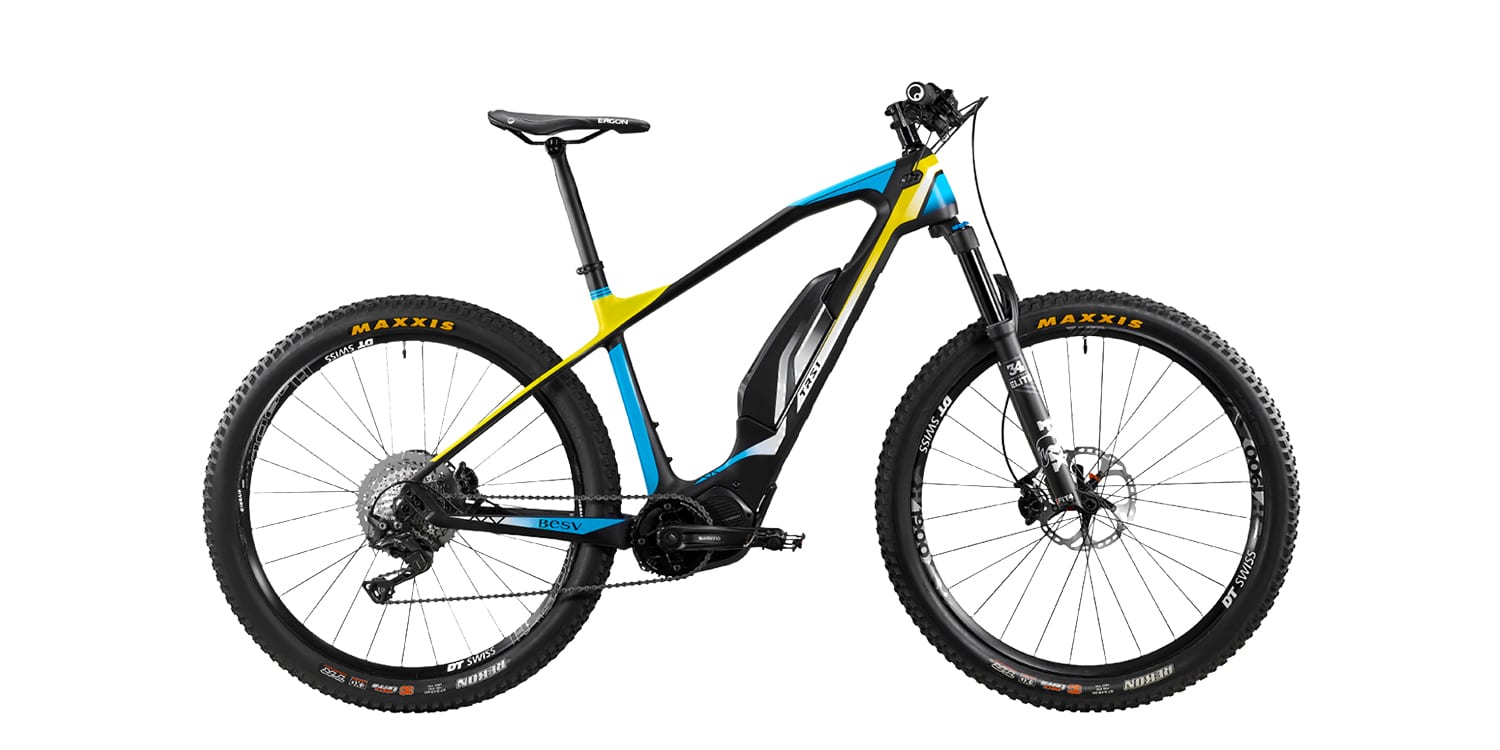
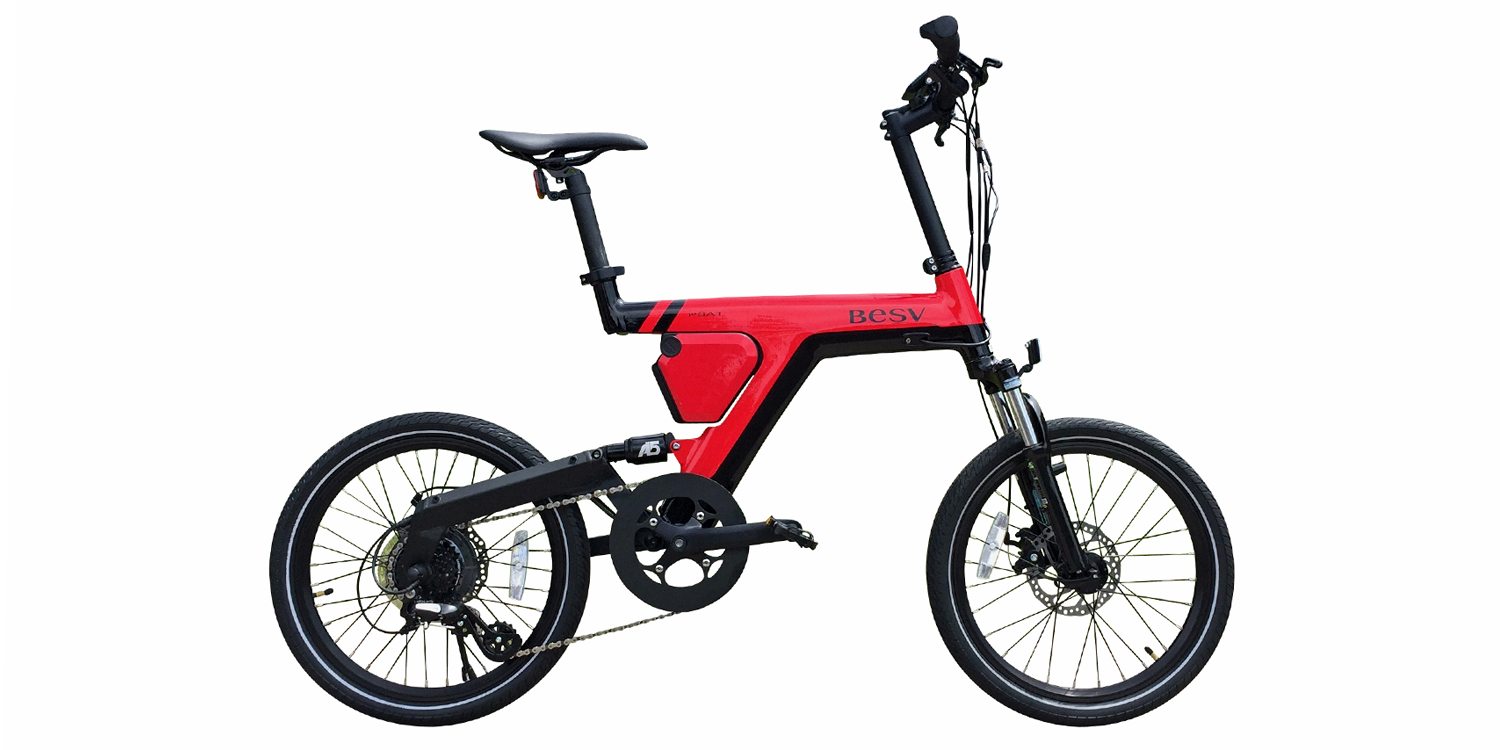
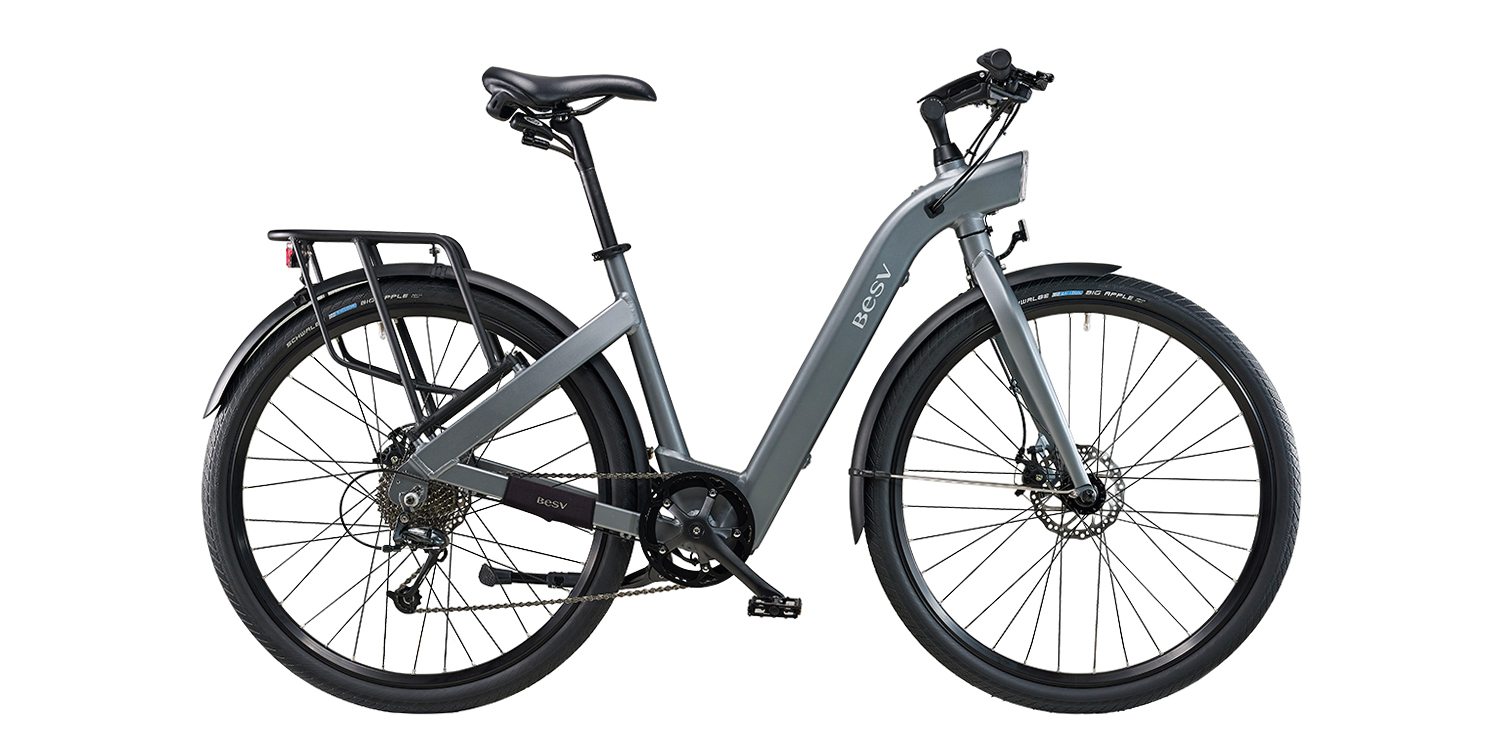
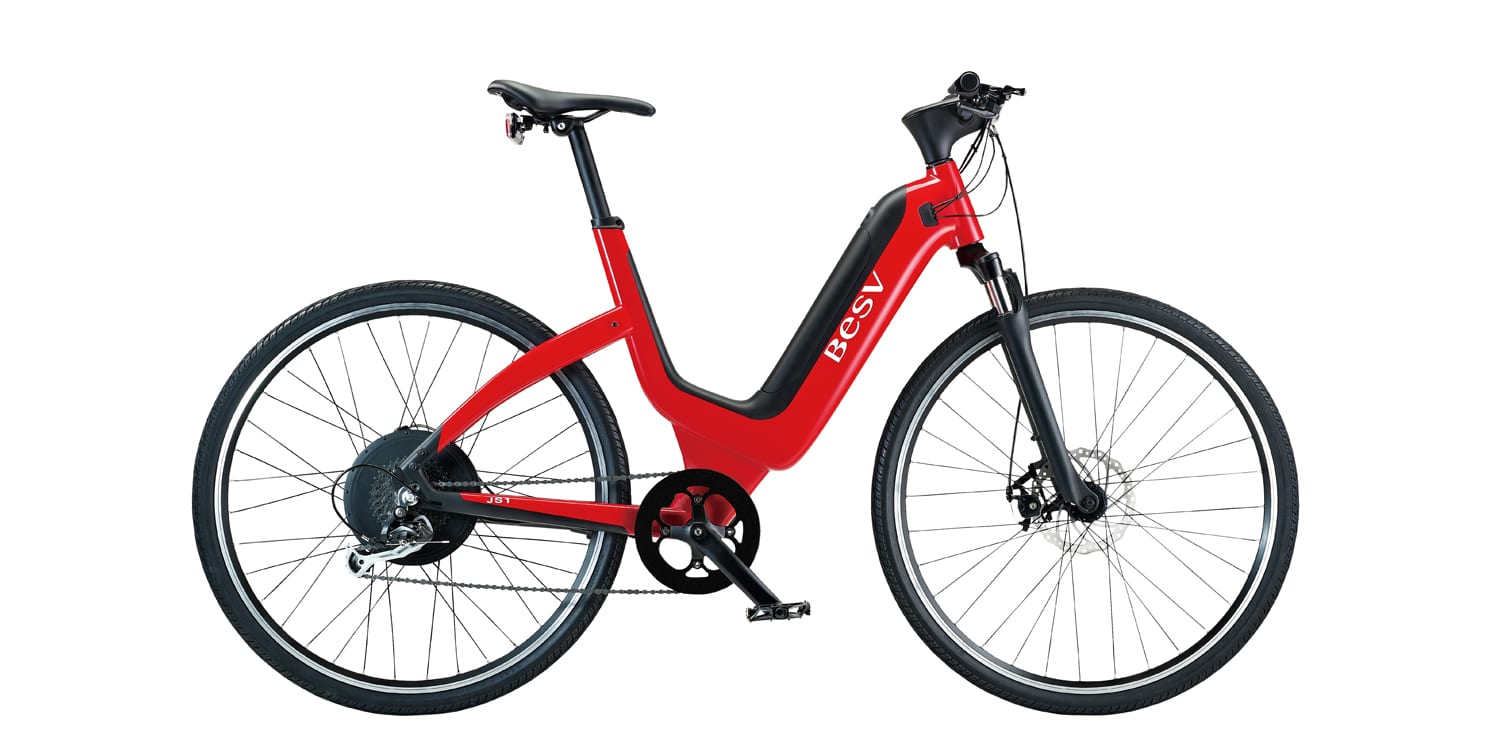
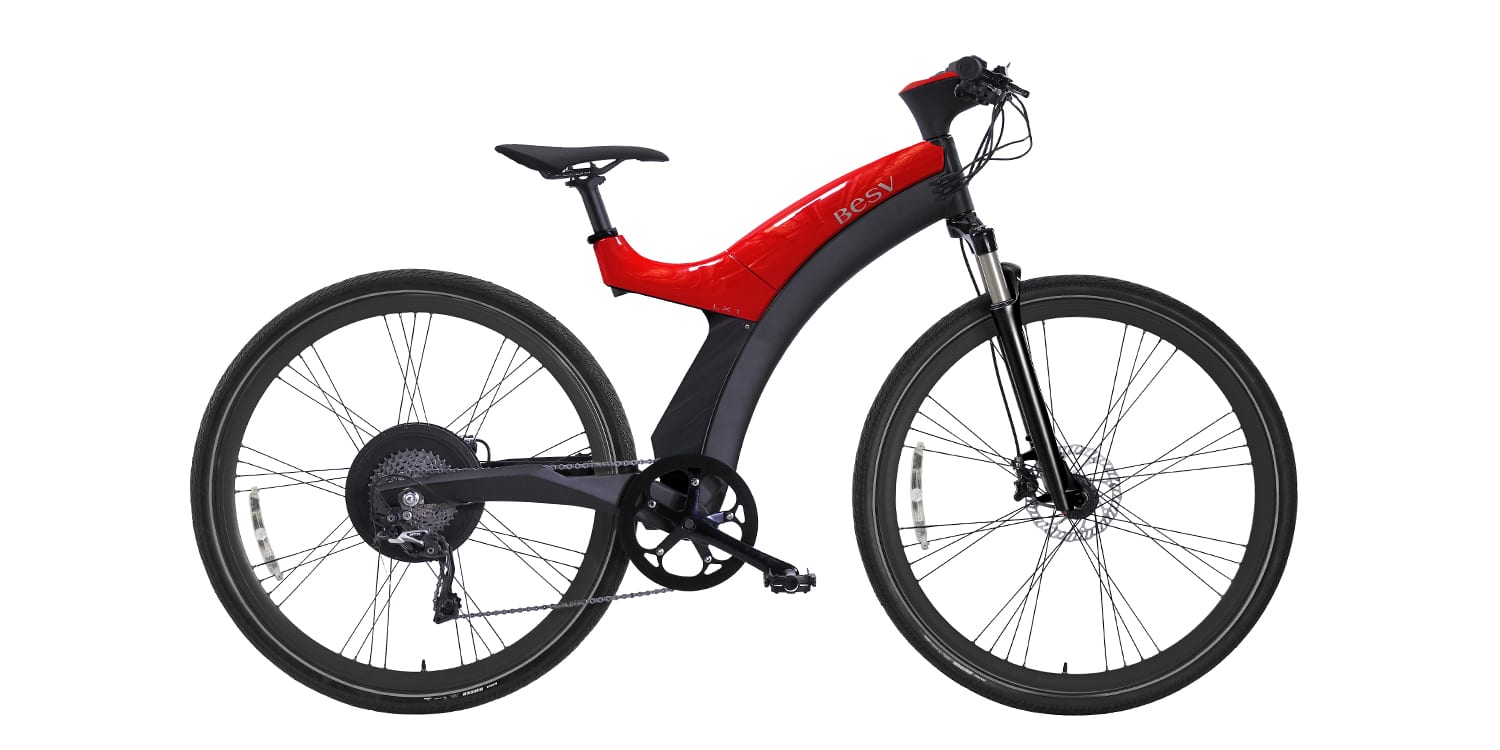
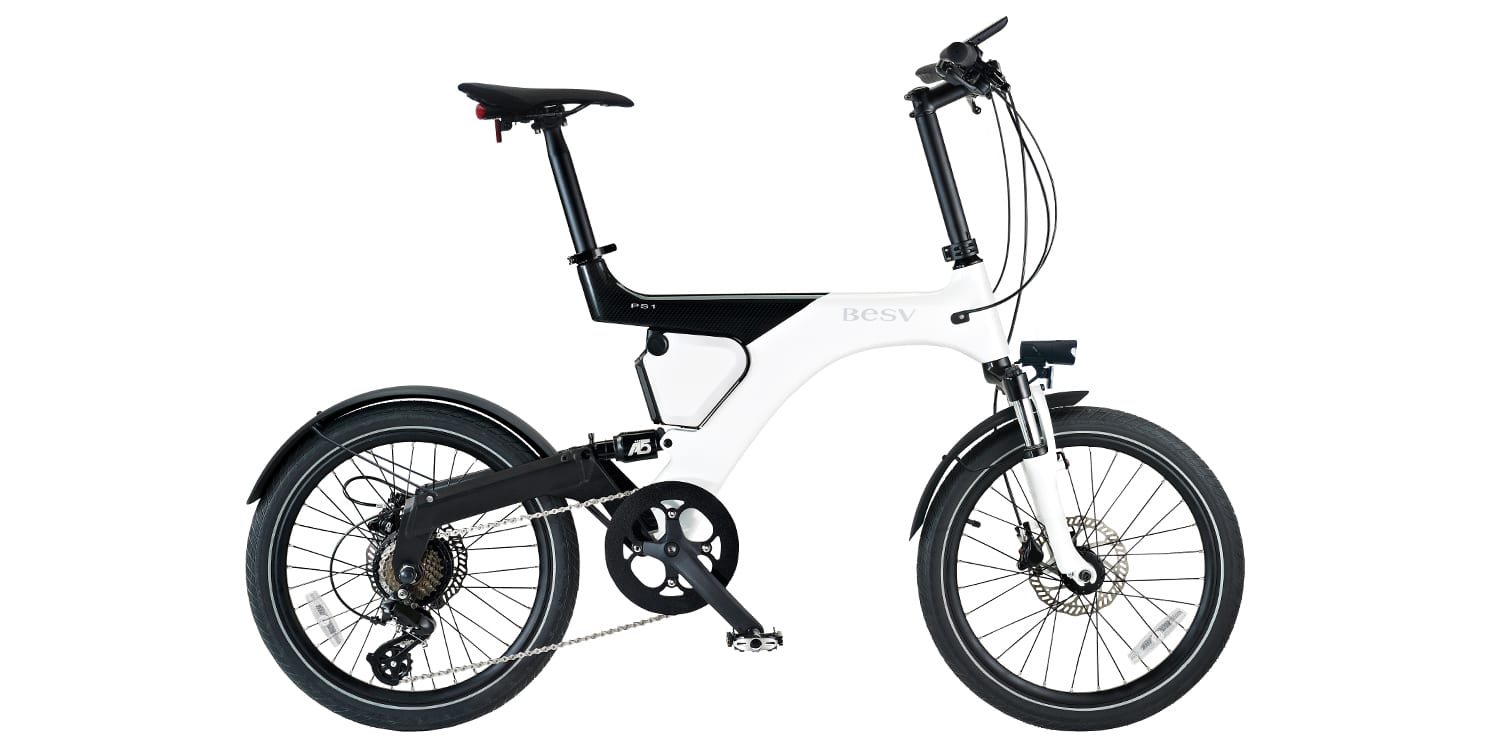
Anonymous says
For all day adventures with lots of up I can see a bike like this carrying the extra weight involved with the larger battery. However not every ride requires it and you are just carrying extra weight. 10ah on a bike like this with the option to have another one at the trailhead to swap to would be about right. Still a heavy bike overall though as that won’t lose more than 8lbs. The light weight wars have already begun and this offering is at the back of the pack.
I do have alot of respect for the designer of this bike however, James McLean. He was the designer of the original StumpJumper and many other products that have all been lasting designs.
court says
Cool! I filmed part of this review with James since he works for BESV and was in town. I really like the lightweight carbon fiber BESV TRS1 with the Yamaha system, even though I prefer Brose S this generation and appreciate the Class 3 performance here. My non-electric bike right now is a Specialized Stumpjumper FSR, I didn’t realize that James had contributed to the original design! Will have to ask him about it the next time we connect :D